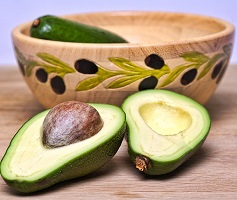![]()
 High blood sugar usually occurs when the human body is unable to transport the sugar effectively from the blood into the cells. When left untreated or unchecked, this can result in diabetes.
High blood sugar usually occurs when the human body is unable to transport the sugar effectively from the blood into the cells. When left untreated or unchecked, this can result in diabetes.
A study derived from 2012, revealed that 12 to 14% of US adults have type 2 diabetes and 37 to 38% are classified as being pre-diabetic. What these figures mean is that 50% of all the US adults are either pre-diabetic or have diabetes.
Here are 6 simple tips you can use to lower your blood sugar using natural methods.
1. Exercise
Sticking to a regular exercise routine will assist you in losing weight and increase your insulin sensitivity. When your insulin sensitivity is increased, your cells become better at using available sugar within the bloodstream. The right exercises can also assist your muscles when it comes to using blood sugar in regards to muscle contractions and energy.
2. Control The Amount Of Carbohydrates Your Eat Daily
The body naturally breaks down carbohydrates into sugars that are mostly made up of glucose, the insulin then moves these sugars into your cells. When eating an excess of carbs or you already have issues with your insulin function, these processes fail and the blood-glucose levels typically rise.
There are a few things you can do about this:
The ADA (American Diabetes Association) recommends that you can control your carb intake in the way of using food exchange systems or counting carbs. Certain studies have suggested that these methods are able to assist people in planning their meals better which are able to further improve your control over your blood sugar.
3. Increase Fiber Intake
Fiber works effectively on slowing down sugar absorption and carb digestion. These reasons alone already promote more gradual rises in your blood-sugar levels. However, there are 2 types of fiber that include soluble and insoluble. These are both important, but the soluble fiber is more important when it comes to lowering blood sugar naturally.
In addition, implementing a diet that is high in fiber is able to manage Type 1 diabetes in the way of improving control over blood sugar levels and reducing the blood-sugar lows. Foods which have high fiber content include whole grains, legumes, fruit, and vegetables.
4. Drink More Water And Stay Hydrated
Drinking a sufficient amount of water is able to assist you in maintaining blood-sugar levels in healthy limits. Over and above preventing dehydration, water is able to assist the kidneys in flushing out excessive amounts of blood sugar that pass out through the urine. Making sure you drink water throughout the day will rehydrate your blood, reduce your risks of diabetes and lower your blood-sugar levels.
5. Focus On Portion Control
When you implement portion control into your diet, you are able to regulate the amount of calories you take in that can result in weight loss. Controlling your weight will consequently promote blood-sugar levels that are healthy as well as reduce your risks associated with the development of Type 2 diabetes.
Here are a few tips you can use to control your meal portions:
· Weigh or measure your portions
· Never go to those all-you-can-eat food restaurants
· Use smaller plates
· Read the labels of food and check on the serving size
· Use a Food Journal
· Eat slower
6. Choose Foods That Have A Low Glycemic Index
The system known as the Glycemic Index was created in order to assess the blood sugar responses in the body to the food types that are made up of or contain carbs. The type and amount of the carbs decides how this food will have an effect on your blood-sugar levels. Eating foods that are low-glycemic-index have been proven to decrease blood-sugar levels in the long-term for Type 1 and Type 2 diabetics.
Even though Glycemic-Index foods are important, it is important to realize that the carb amounts that are consumed will also matter. The low Glycemic- Index foods include lentils, sweet potatoes, yams, corn, seafood, eggs, barley, oats, beans, meat, non-starchy vegetables and most of the fruits.
It is important choose the foods that have a low-glycemic index as well as keep a watch on the carbs you eat overall.




 OneCareNow is a general weblog that was created by several writers with a specific goal in mind: To offer one place that covers important topics which people really care about.
OneCareNow is a general weblog that was created by several writers with a specific goal in mind: To offer one place that covers important topics which people really care about.



![Back Pain Breakthrough by Palmer & Dr. Young [2024 Review]](https://www.onecarenow.org/wp-content/uploads/2021/02/Back-Pain-Breakthrough-Young-Amy-50x50.png)
![Vincent’s Midas Manifestation System Review [Updated 2024]](https://www.onecarenow.org/wp-content/uploads/2021/02/Midas-Manifestation-50x50.png)
![The NEW Happiness Code by David [Updated 2024 Review]](https://www.onecarenow.org/wp-content/uploads/2021/01/The-NEW-Happiness-Code-50x50.png)
![Michael Christianson’s Manifestation Sigil Review [2024]](https://www.onecarenow.org/wp-content/uploads/2021/01/Manifestation-Sigil-50x50.png)
